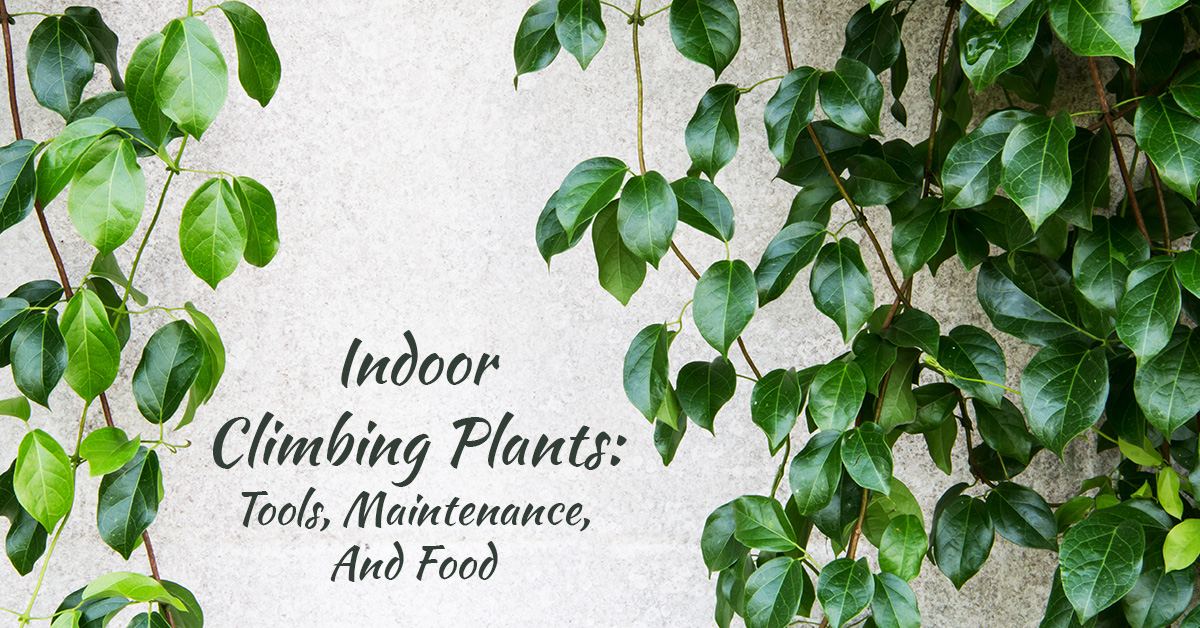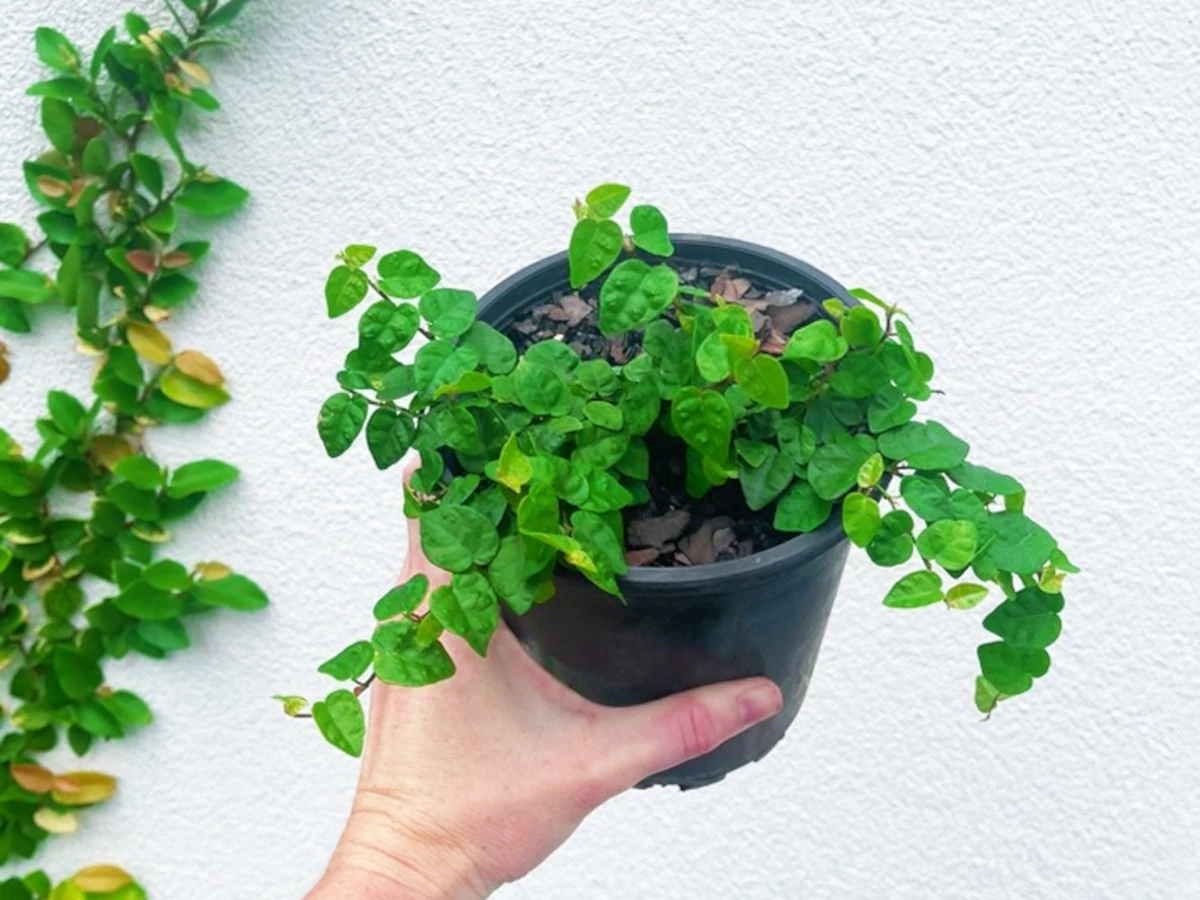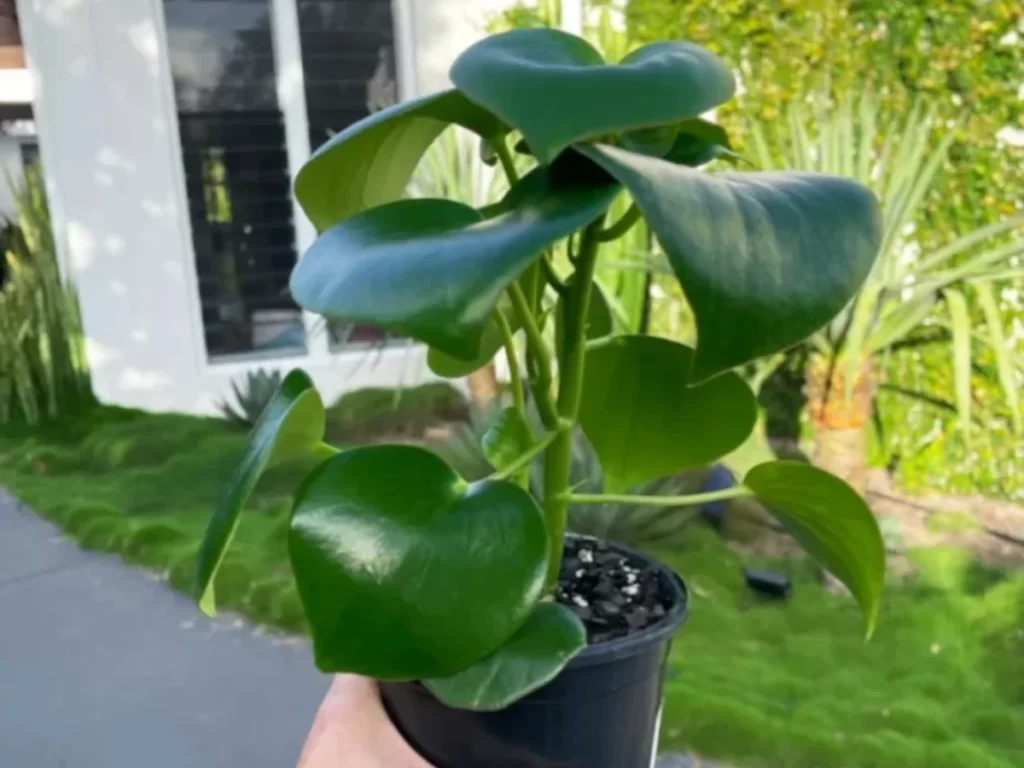
Design your dream garden today!
Get in touch with our expert garden designers for a quote.
Find out more

As plant enthusiasts, we understand the joy these green companions bring to your living spaces. In this guide, we’ll delve into the tools, maintenance, and even touch upon the nutritional needs of indoor climbing plants, with a special spotlight on two favourites: Ficus pumila and Peperomia Raindrop.
Getting To Know Indoor Climbing Plants
Indoor climbing plants, including the resilient Ficus pumila and the distinctive Peperomia Raindrop, offer more than just visual charm; they are living contributors to your well-being. By understanding the essentials of their growth, you pave the way for a thriving indoor garden that requires minimal effort.
These plants excel in adapting to indoor conditions, making them ideal choices for homes. The benefits extend beyond mere decoration; they actively participate in the air purification process, making your living space not just beautiful but also healthier.
In the following sections, we will explore the tools, maintenance practices, and even touch upon the nutritional aspects necessary for the optimal growth of indoor climbing plants.
Tools for Indoor Climbing Plant Enthusiasts
Tools play a pivotal role in ensuring the well-being of your indoor climbing plants. A modest set of essentials can make the process of caring for the plants both straightforward and enjoyable.
Pruning Shears
Invest in a pair of lightweight pruning shears to maintain the shape and size of your indoor climbers. Regular pruning encourages healthier growth, prevents overcrowding, and enhances the overall appearance. A gentle trim every few weeks keeps your plants looking their best.
Soft Cloth or Sponge
Maintaining the cleanliness of your plant’s leaves is essential for optimal photosynthesis. A soft cloth or sponge, dampened with water, allows you to gently wipe away accumulated dust. This simple practice not only keeps your indoor climbing plants looking vibrant but also aids in their overall health.
Stakes or Trellises
As your plants ascend, they’ll need support to guide their growth. Utilise stakes or trellises to provide structure and encourage upward development. This not only adds a decorative element to your indoor garden but also ensures your climbers grow in a controlled and aesthetically pleasing manner.
With the use of these basic tools in your indoor gardening routine, you equip yourself to effortlessly maintain the health and appearance of indoor climbers.
Indoor Climbing Plants Maintenance Tips for Healthy Growth
Maintaining the well-being of your indoor climbing plants involves more than occasional watering. Here’s a concise guide to ensure your climbers stay robust and visually appealing:
- Lighting Requirements – Indoor climbing plants flourish in bright, indirect light. Position them near windows where they receive filtered sunlight. However, be cautious of exposing them to intense afternoon sun, which can potentially harm their delicate leaves.
- Watering Routine – Strike a balance with watering to maintain consistently moist soil. Check the top inch regularly, and water when it feels dry. Proper drainage is crucial to prevent waterlogging, a common issue leading to root rot in indoor plants.
- Supporting Growth – To guide the upward growth of your climbers, provide adequate support in the form of stakes or trellises. This not only ensures a visually appealing display but also encourages the development of a robust structure.
Follow these simple yet crucial maintenance practices to set the foundation for a thriving indoor garden. These general maintenance tips will remain valuable for cultivating a healthy green haven within your home.
Top Two Indoor Climbing Plants To Add To Your Garden
Ficus pumila (Creeping Fig)
Among the stars of indoor climbing plants, Ficus pumila, commonly known as the Creeping Fig, stands out for its charm and adaptability. Understanding the unique characteristics of this plant will help you nurture it effectively within your home.

Distinctive Features
Ficus pumila boasts heart-shaped leaves that contribute to its visual appeal. Its cascading vines make it a versatile choice for both indoor and outdoor settings, allowing you to create decorative displays or cover unsightly surfaces.
Maintenance Tips
- Regular Trimming – Ficus pumila benefits from regular pruning to control its growth and maintain the desired shape. This not only prevents overcrowding but also encourages the development of new, vibrant foliage.
- Pest Vigilance – Keep an eye out for potential pests, with spider mites being a common concern. Regular inspection and prompt action, using organic solutions like neem oil, ensure a healthy and pest-free Ficus pumila.
- Supportive Structure – As a climbing plant, Ficus pumila appreciates a supportive structure. Consider providing stakes or a trellis to guide its vines, promoting upward growth and enhancing its decorative presence.
Ficus pumila’s resilience and adaptability make it an excellent choice for homes. Whether adorning your living room or creating a green backdrop on a balcony, this climbing plant adds a touch of nature to your surroundings.
Peperomia Raindrop (Peperomia Polybotrya)
Peperomia Raindrop, with its unique raindrop-shaped leaves, is a standout choice for indoor climbing plants. This resilient and visually appealing plant is well-suited for homes, bringing a touch of nature into your living space.

Characteristic Leaves
The distinct feature of Peperomia Raindrop lies in its leaves, resembling delicate raindrops. This plant’s compact size and attractive foliage make it an excellent addition to any indoor setting, thriving in moderate conditions.
Maintenance Tips
- Moderate Watering – Peperomia Raindrop prefers its soil to dry out slightly between waterings. A careful balance is essential to prevent overwatering, which can adversely affect the plant. Adjust your watering routine based on the moisture level of the topsoil.
- Indirect Light – Provide moderate, indirect light to maintain the vibrancy of its leaves. While Peperomia Raindrop can tolerate lower light conditions, ensuring it receives adequate brightness enhances its overall health and appearance.
- Occasional Misting – To boost humidity, especially during drier periods, consider misting the plant occasionally. This simple practice mimics its natural environment, promoting optimal growth.
Peperomia Raindrop’s adaptability and low-maintenance nature make it a delightful choice for indoor gardening. Whether adorning shelves or adding greenery to a workspace, this climbing plant introduces an understated elegance to your surroundings.
Indoor Climbing Plants Nutritional Needs
Ensuring the optimal growth of your plants involves understanding and addressing their nutritional requirements. While soil provides a base, occasional nutritional boosts contribute to the overall health and vitality of indoor climbing plants.
Choosing the Right Fertiliser
Selecting a well-balanced, water-soluble fertiliser designed for indoor plants is essential. Look for formulations with a balanced ratio of nitrogen, phosphorus, and potassium (N-P-K) to provide a comprehensive array of nutrients. These nutrients contribute to robust foliage, healthy root development, and overall plant resilience.
Application Timing
Timing is crucial when it comes to fertilising indoor climbing plants. Focus on the growing season, typically spring and summer, to provide the necessary nutrients for active growth. During these periods, plants are more receptive to fertilisers, enhancing their capacity to absorb and utilise nutrients effectively.
Dosage and Frequency
Follow the recommended dosage provided on the fertiliser packaging. Over-fertilising can be harmful, leading to nutrient imbalances or even root burns. Aim for a moderate and consistent application every 4-6 weeks during the growing season to ensure a steady supply of nutrients without overwhelming your plants.
By incorporating these simple yet vital nutritional practices, you contribute to the long-term health and vibrancy of indoor climbing plants.
Tips and Tricks When Caring for Indoor Climbing Plants
Now that we’ve covered the essentials, let’s consolidate some tips and tricks to care for your indoor climbing plants:
- Rotation – Periodically rotate your indoor climbers to ensure even exposure to light. This simple practice promotes balanced growth, preventing one side from becoming leggy or deprived of sunlight.
- Pruning Techniques – Become adept at pruning to maintain the desired shape and encourage bushier growth. Regular trimming not only controls the size of your plants but also stimulates the development of new, healthy foliage.
- Humidity Boost – Indoor environments can sometimes lack the humidity levels that climbing plants adore. Consider placing a tray of water near your plants or employing a humidifier to mimic their natural habitat, especially during dry spells.
- Observation is Key – Pay attention to your plants. If you notice any changes in colour, leaf texture, or growth patterns, adjust your care routine accordingly. Plants often communicate their needs through subtle signs.
These practical tips, rooted in simplicity and observation, are the building blocks for a successful indoor climbing plant haven.
Common Issues and Solutions With Indoor Climbing Plants
Caring for indoor climbing plants, like Ficus pumila and Peperomia Raindrop, comes with its set of challenges. Recognising common issues and having effective solutions on hand ensures the continued well-being of your green companions:
Yellowing Leaves
Yellowing leaves are often a sign of overwatering. Adjust your watering routine by allowing the top inch of soil to dry out before the next watering. Ensure proper drainage to prevent waterlogged soil, which can lead to root rot.
Pest Infestation
Keep a vigilant eye for pests, especially on Ficus pumila. Spider mites are a common concern. Use organic remedies like neem oil or insecticidal soap to address infestations promptly without harming your plants.
Wilting
Wilting can be a sign of both overwatering and underwatering. Check the soil moisture and adjust your watering routine accordingly. Ensure that your pots have drainage holes to prevent water stagnation.
Leggy Growth
If your indoor climbers start exhibiting leggy growth, it’s a signal they may need more light. Move them to a brighter location with filtered sunlight to encourage more compact and robust growth.
By identifying and addressing these common issues proactively, you contribute to the resilience and longevity of your indoor climbing plants. These practical solutions will empower you to overcome challenges and enjoy a flourishing indoor garden.
Establishing an Indoor Climbing Plants Routine
Consistency is the key to maintaining the health and vibrancy of your indoor climbing plants. Establishing a simple yet effective routine ensures that your plants receive the care they need to thrive in your home:
Watering Routine
Check the soil moisture weekly and water when the top inch feels dry. Tailor your watering schedule to the specific needs of indoor climbers, avoiding overwatering or letting the soil dry out excessively.
Pruning Maintenance
Trim your indoor climbers as needed to control their growth and maintain the desired shape. Regular pruning stimulates new growth and prevents overcrowding, ensuring a well-manicured appearance.
Fertilising Schedule
Feed your plants with a balanced, water-soluble fertiliser every 4-6 weeks during the growing season. Follow the recommended dosage on the packaging to provide essential nutrients for robust foliage and overall plant health.
With these straightforward practices in your routine, you’ll create an environment where indoor climbing plants can thrive. Consistency in care not only promotes the well-being of your plants but also enhances your enjoyment of cultivating a green haven within the confines of your living space.
Indoor climbing plants, including the delightful Ficus pumila and Peperomia Raindrop, have the power to transform your living space into a green sanctuary. By understanding their needs, providing the right tools, and embracing a simple maintenance routine, you’ll reap the rewards of a vibrant indoor garden.
Remember, the journey of nurturing these green companions is as rewarding as the visual delight they bring. Apply these tips, observe your plants, and revel in the joy of a flourishing indoor garden.
Share your indoor climbing plant experiences with us! Whether you have questions or success stories, we’d love to hear from fellow plant enthusiasts. For more in-depth knowledge, explore our other gardening guides, and continue cultivating your green haven. Happy planting!


